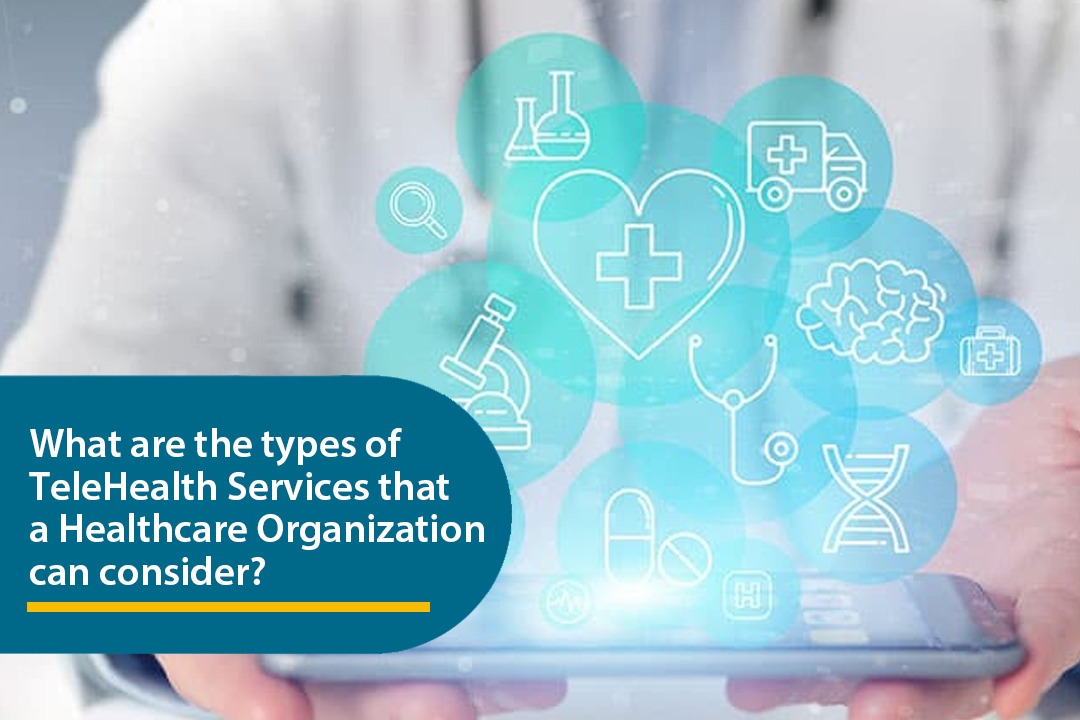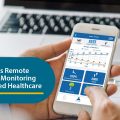One of the significant contributions from technology made in the Healthcare sector is TeleHealth. The application of Electronic Information and Telecommunication technologies to support patients living in remote locations has created a visible difference in the Healthcare sector.
However, before getting into the various types of TeleHealth Services, it would be interesting to understand the difference between TeleHealth and Telemedicine.
What is the difference between TeleHealth and Telemedicine?
In simple terms, Telemedicine constitutes different types of Remote Healthcare Services offered by a Healthcare Service Provider. TeleHealth, on the other hand, can include non-clinical services too that include provider training, administrative services and medical education, in addition to clinical services.
Types of TeleHealth Services that a Healthcare Organization can consider
Implementing TeleHealth Services has made life easy for both Healthcare Service Providers and Patients, especially during the current Pandemic crisis. How was all this possible? What is there in the TeleHealth industry for you to choose? Which type of TeleHealth is best for your patient base? Here’s a look at some exciting answers to the above questions!
- Live Video-Conferencing
Video-conferencing has been a big success. It has particularly helped in reaching quality healthcare services to remote areas. This type of TeleHealth Service is widely used by everyone, from physicians working at regular healthcare centres, to those who have their clinics. For patients, this facility can reduce physical and mental stress caused due to frequent travel.
- Store and Forward
Store-and-forward telemedicine surpasses the need for the medical practitioner to meet in person with a patient. They can seek information such as medical images. This practice is effectively being used in the medical fields of dermatology, radiology, and pathology. With proper structure and care, store-and-forward telemedicine can save time and allow medical practitioners to serve the public with their services more fully. However, this form of telemedicine relies on a history report and documented information or images, rather than a physical examination that can lead to complications such as misdiagnosis.
- Remote Patient Monitoring (RPM)
Senior Citizens and patients, who find it uncomfortable to move around frequently, have been benefitted from this technology. Physicians can receive medical data electronically and give their opinions immediately after studying them. It is useful in preventing senior patients from suffering a fall.
- Smart Devices
Introduction of mobile apps and healthcare devices have taken the concept of TeleHealth to the next level. Devices such as smartphones, tablets and patients vital parameter monitoring devices have helped doctors keep a regular check on the patient’s health condition.
Conclusion
TeleHealth is here to stay. With the global Healthcare system stressed beyond limits, there is every need to give Healthcare workers a break from routines they so richly deserve. A change in process can do a world of good for both patients and healthcare providers. TeleHealth Service is an excellent step forward in improving the accessibility of healthcare to all patients, particularly those living in areas with limited local health professionals. Additionally, they offer a significant benefit of the reduced cost compared to traditional in-person appointments.
To know more about the benefits of Telehealth and how much of a positive influence it continues to have on people’s lives, feel free to meet us at Apollo Telehealth, the front runner in Telehealth Services.




